Our Story
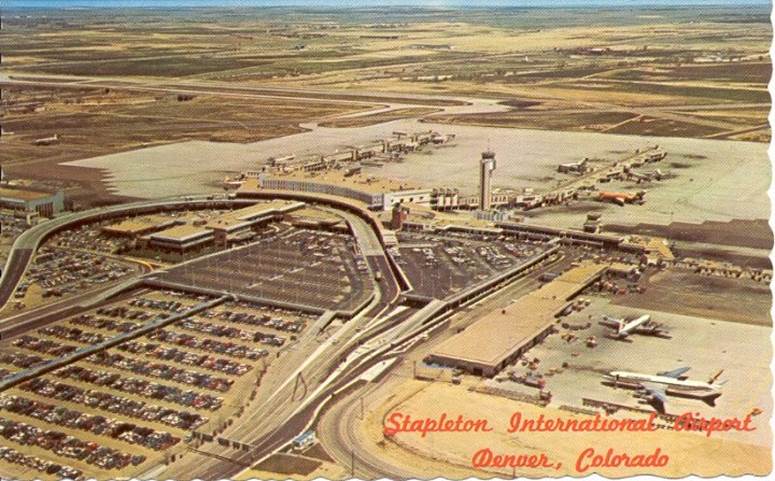
Denver's first International Airport (DIA) opened as a small municipal airport in 1929–30 and went on to become the regions primary airport for sixty-five years, until it was replaced by Denver's New Relocated International Airport in 1995. The airport played a major role in Denver’s development as a national transportation and shipping hub. Today, Denver’s original airport buildings are gone (except the tower), the land has since been redeveloped into a thriving urban community of 35,000 residents which provides an example to all other urban redevelopment initiatives.
Beginnings
With the exception of the 1931–35 term, Benjamin Stapleton was mayor of Denver from 1923 to 1947. He was one of the few people in the city who foresaw the tremendous potential of the airplane in the 1920s, and he wanted to consolidate Denver’s local, growing aviation industry around a single airport. Enlisting the aid of his Improvements and Parks Department manager, Charles Vail, Stapleton’s administration began laying the necessary groundwork. From the beginning, the airport project was placed under the jurisdiction of Improvements and Parks. The airport encountered opposition from the start, as some argued that Denver had no right to build a facility that would be a commercial venture for the city.
The site that Stapleton and Vail selected was called the Sand Creek site, or Rattlesnake Hollow, seven miles from downtown Denver. The new airport, named Denver Municipal Airport (DMA), celebrated its opening with a four-day program of events, from October 17 to October 20, 1929. Only three airlines had offices in the two-story administration building: Mid-Continent Express, which had just begun passenger service between Denver and El Paso; Western Air Express; and US Airways. Since there were so few passenger flights in 1929, the new facility functioned more like a glorified post office—the primary purpose of all three companies was flying the mail.
Yet by the end of 1930, its first full year of service, DMA was already turning a profit, with thirty takeoffs and landings registered every day and three new companies signing on to provide service: Carlos Reavis Service, Eddie Brooks Service, and Western Flying Service. In January 1931 city and airport officials constructed a new hangar, initiating a fifty-year run of continuous growth. In 1937 both United and Continental Airlines began offering service to and from DMA. By the end of the 1930s Denver Municipal was the city’s premier airport, although the area also hosted a number of privately owned airfields. Yet passenger traffic still languished. Though local businesses were convinced of the facility’s importance, the average Denverite was still not using the airport or planes on a regular basis. This would change with the onset of World War II.
After World War II
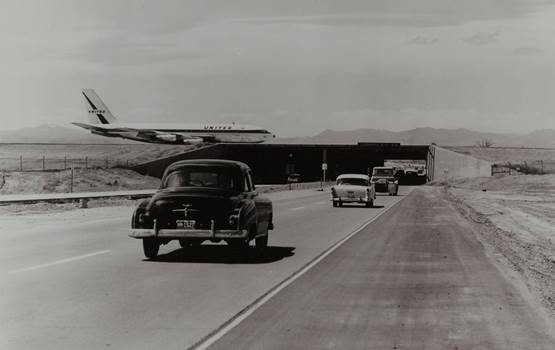
World War II was the catalyst for giant leaps in aviation technology; after the war, the average American was introduced to flying in numbers never seen before. The war cultivated a mass appreciation for the airplane and helped it capture much of the passenger market that trains had held for generations. Moreover, many people around the nation and the world came to view Denver as an important air hub due to its central location between the country’s international borders and its proximity to military bases, and federal authorities seriously considered proposed commercial routes that would tie Denver to other important cities such as Chicago and Washington, DC.
DMA was renamed Stapleton Airfield on August 25, 1944. When the war was over, Denver saw the airport as a key to the city’s future. The facility had kept up with all of the technological advances in aviation and was prepared for the future. Among these advances was a new control tower, added in 1941. The octagonal, six-story tower still stood atop the old administration building, but that same year, all of the runways were equipped with modern lighting; also, the Civil Aeronautics Authority (CAA) announced it would be expanding its offices at the airport by installing a new teletype communication system.
By 1945 the airport had experienced phenomenal growth. Its original 640 acres had grown to 1,435, and there were forty to fifty commercial flights a day, up from eight per day in 1929. Denver's Airport employed 1,200 people, up from forty at the start, and boasted four runways, two flying schools, and four major airlines. Along with the three-story administration building, Denver's Airport now had six hangars, a post office, fire station, control tower, USO lounge, and a café. The airport also housed the CAA’s five-state air traffic control, staffed by thirty-five CAA personnel and ten army flight controllers who coordinated all commercial, private, and military flights.
To ensure the airport’s future, Stapleton and new improvements and parks manager George Cranmer unveiled an ambitious expansion plan in 1946. The $1 million proposal called for the extension of the east-west runway and the construction of a horseshoe-shaped terminal that would be built in units to allow for future expansion. However, when Stapleton left office, new mayor James Newton (1947–55) abandoned the expensive plan because the city had yet to experience the forecasted postwar aviation boom. With Denver’s newspapers, local politicians, and airport officials calling for more improvements, in September 1947 Newton decided to appoint a committee to study the airport. In a short time, the Airport was growing once again.
By the 1950s the airplane had become an established means of transportation. Denver's Airport was being pushed to its capacity with tremendous increases in passenger travel; the forecasted aviation boom had simply taken a few more years than expected. In 1950 nearly 2,000 people passed through the airport each day, and by 1955 the annual figure had reached 1 million passengers. The increased traffic required extensive growth, and the airport was under construction throughout the 1950s. First a south wing was added to the administration building, then a north wing. In 1954 the original terminal was replaced. To handle the corresponding increase in airplane activity, a new, six-story control tower was completed in June 1953, replacing the iconic octagonal tower.
Jet Flight
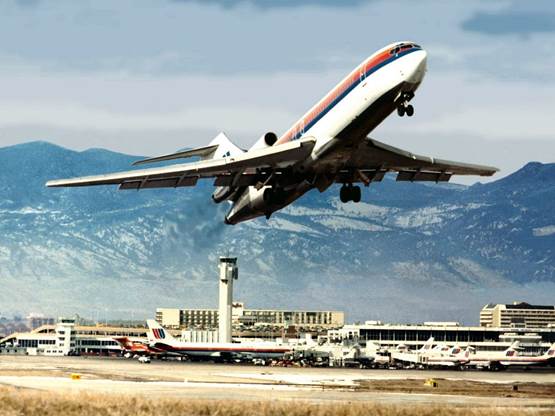
The first jet flight out of Denver took off on May 6, 1959—a Continental Boeing 707. The jet was intentionally underloaded with just ninety-three passengers, because Stapleton’s runways could not support jet-engine aircraft. Intending to construct jet-capable runways, the city of Denver originally placed an order for 252 acres of land on the nearby Rocky Mountain Arsenal in 1954, but by 1957 many airport experts felt that the jet age required more than just extending the east-west runway—it required a jet-age master plan that would accommodate airport growth several decades into the future.
In 1958 Denver newspapers quoted Mayor William Nicholson (1955–59) saying that the Airport would ultimately require not only all of the Rocky Mountain Arsenal land but also all of Buckley Field. The newly formed Federal Aviation Agency (FAA) denied all of the city’s requests for new land, citing an overabundance of active development proposals dating to the Stapleton era. Eventually, Denver received the original 2,520-acre request on April 7, 1959, and by the end of 1962 the Airport completed construction of a new jet-engine runway.
In 1960 Denver's Airport ranked fifth in total aircraft operations and served more than 1.5 million passengers annually. Only one year later, it jumped to third place and counted more than 2 million people through its gates. Consequently, the decade saw more expansion, including a new fourteen-story control tower, two new concourses, and new sections for the terminal that doubled its size and gave it the distinctive horseshoe shape. A twenty-bed fire station was added after the first major jet crash occurred, which claimed seventeen lives on July 11, 1961. In 1964 the airport was renamed Stapleton International Airport, reflecting its steady growth.
Decline
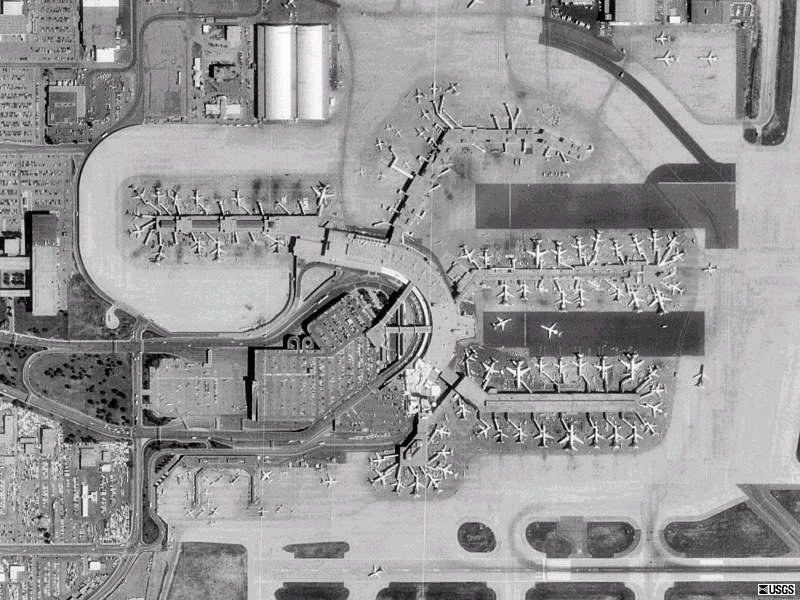
On April 30, 1967, thousands of Denverites came out to view the finished product of the 1950s master plan. With the newly expanded terminal, seven hangars, a new control tower, a fire station, a two-story parking lot, and the jet runway—all of which cost some $56 million—Stapleton International Airport represented a significant investment to the city.
But increasing popularity and rapid growth turned out to be its undoing. Unable to keep up with the ever-increasing demand for international air traffic, the size of jet aircraft, or the land necessary to support continuous expansion, Stapleton International Airport halted flight service on February 28, 1995, and ceded all commercial airliner traffic to the newly constructed Denver International Airport.
Adapted from Jeff Miller, “An Airport in Place: Stapleton International Airport’s First Fifty-Five Years of Growth,” Colorado Heritage Magazine 4, no. 3 (1984).
Breaking the Color Barrier
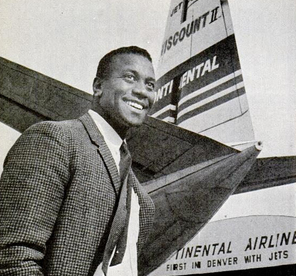
The first African American pilot hired by a commercial passenger airline carrier owed his achievement to Denver Colorado Pilot Marlon D. Green who fought a six-year court battle that opened the industry to minority-race aviators.
Hoping to provide a better life for his growing family, Captain Green, then with the 32th Air Rescue Squadron at Johnson Air Force Base in Tokyo, Japan, resigned from the Air Force in 1957 and sought employment as an airline pilot. After having his application rejected or ignored by hundreds of commercial and private carriers, including ten major American carriers, Green filed a complaint with the Colorado Anti-Discrimination Commission (CADC) when Colorado-based Continental Airlines hired five less experienced white pilots but denied him employment. After a three-year stint flying personnel for the Michigan State Highway Patrol he was forced to work a variety of menial jobs, including cleaning milk containers at a dairy, while the complaint made its way through the court system until it reached the U.S. Supreme, led by Chief Justice Earl Warren. Among those organizations and persons filing “friends of the court” briefs supporting Green’s argument, that he had suffered racial discrimination and that the airline’s contention that its status as an interstate carrier exempted it from adhering to individual state (Colorado) laws and regulations, was U.S. Attorney General Robert F. Kennedy. In April 1963, Justice Hugo Black explained in a written opinion why the court ruled unanimously against Continental Airlines and ordered it to enroll Green in a pilot training class to prepare him for company flights. In September 1964, a Colorado judge ordered the airline to offer Green a job with full seniority and a retroactive pay date of 1957. Starting in January 1965, Green began flying passenger planes out of Stapleton International Airport for Continental Airlines. He was promoted to captain in 1966 , completing his career in Denver.
Fikes, R. (2017, September 24) Marlon DeWitt Green (1929-2009). Retrieved from https://www.blackpast.org/african-american-history/green-marlon-dewitt-1929-2009/
Renewal & Redevelopment
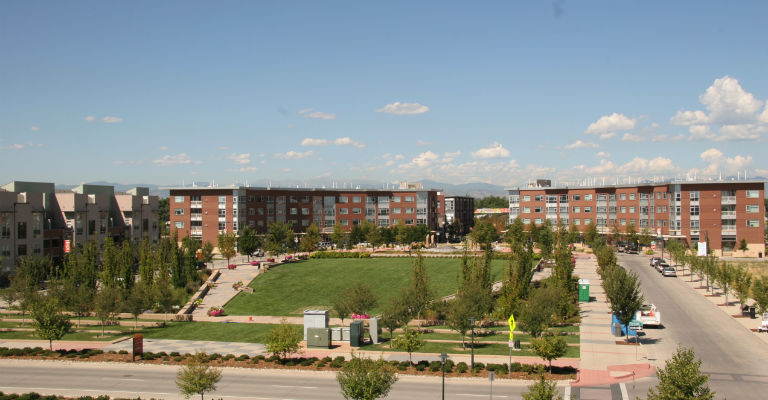
After 65 years of aviation activity, Stapleton International Airport was about to undergo a transformation which would take 30-40 years to complete. The Development plan laid out a physical, social, environmental, economic and regulatory framework to guide the transformation over the next several decades. It described a new approach to development, a real world example of sustainable development of significant scale. What emerged over time was a network of urban villages, employment centers and significant open spaces, all linked by a commitment to the protection of natural resources and the development of human resources.
The Development Plan was adopted by then Denver Mayor Wellington Webb and the City Council as an amendment to the City's Comprehensive Plan.
Planning for the future of Stapleton had been going on since 1989, beginning with the Stapleton Tomorrow process and culminating with the Stapleton Development Plan. This Plan was the product of a partnership between the City and County of Denver, the Stapleton Redevelopment Foundation, a Citizens's Advisory Board appointed by Mayor Wellington Webb and a highly skilled technical consulting team. Throughout the process, more than 100 community presentations and meetings were held to insure community-wide participation and input.
In 1991, the City Council adopted the Stapleton Tomorrow Plan (The Green Book), which identified the following 8 basic objectives for the redevelopment of the Stapleton Airport. These objectives continue to guide the continued development plan of the site.
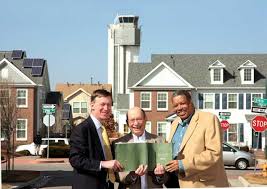
- Generate significant economic development.
- Produce a positive impact on existing neighborhoods and businesses.
- Enhance environmental quality throughout the site and surrounding areas.
- Create a positive identity unique to Denver and the surrounding region.
- Promote high standards of urban design.
- Generate revenues through appropriate asset management to help fund DIA.
- Create substantial educational, and cultural opportunities and support systems.
- Provide balances transportation options and spacious parks and open space.
Today
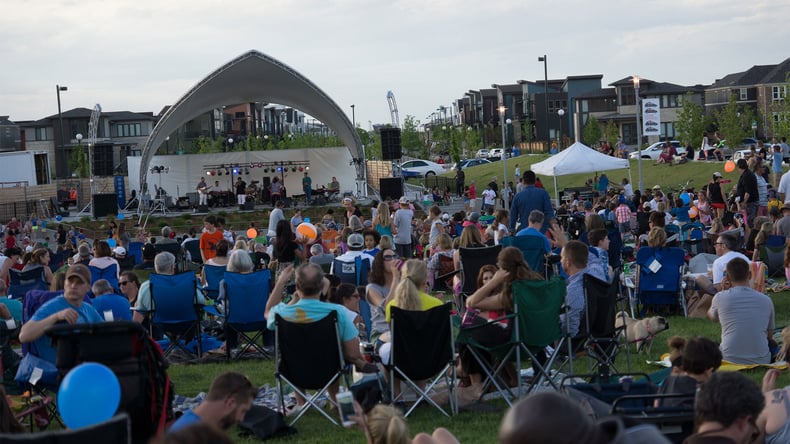
Construction of Denver's largest neighborhood broke ground in 2001. Over the last two decades, this development has become synonymous with an urban neighborhood that boasts award-winning parks, pools, schools and a diverse array of people, homes and lifestyles. In 2020 the community came together to rename the 12 developed neighborhoods to Denver's CENTRAL PARK NEIGHBORHOOD . Built as Denver's world class International airport, now as Denver's Historic Airport District and a true urban oasis. The estimated 30,000+ residents are at the heart of this success, helping create the spirit, personality and quality of life that are palpable just by walking down the street. It stands as a model for urban redevelopment worldwide. Buzzing with bike races, farmers markets and concerts in the park, now thrives at a grassroots level thanks to residents and business owners each adding their own touch. It has become a place that’s far better than anyone could have planned.



